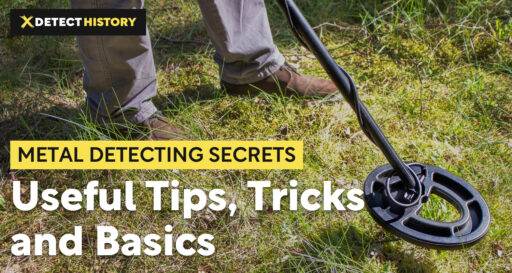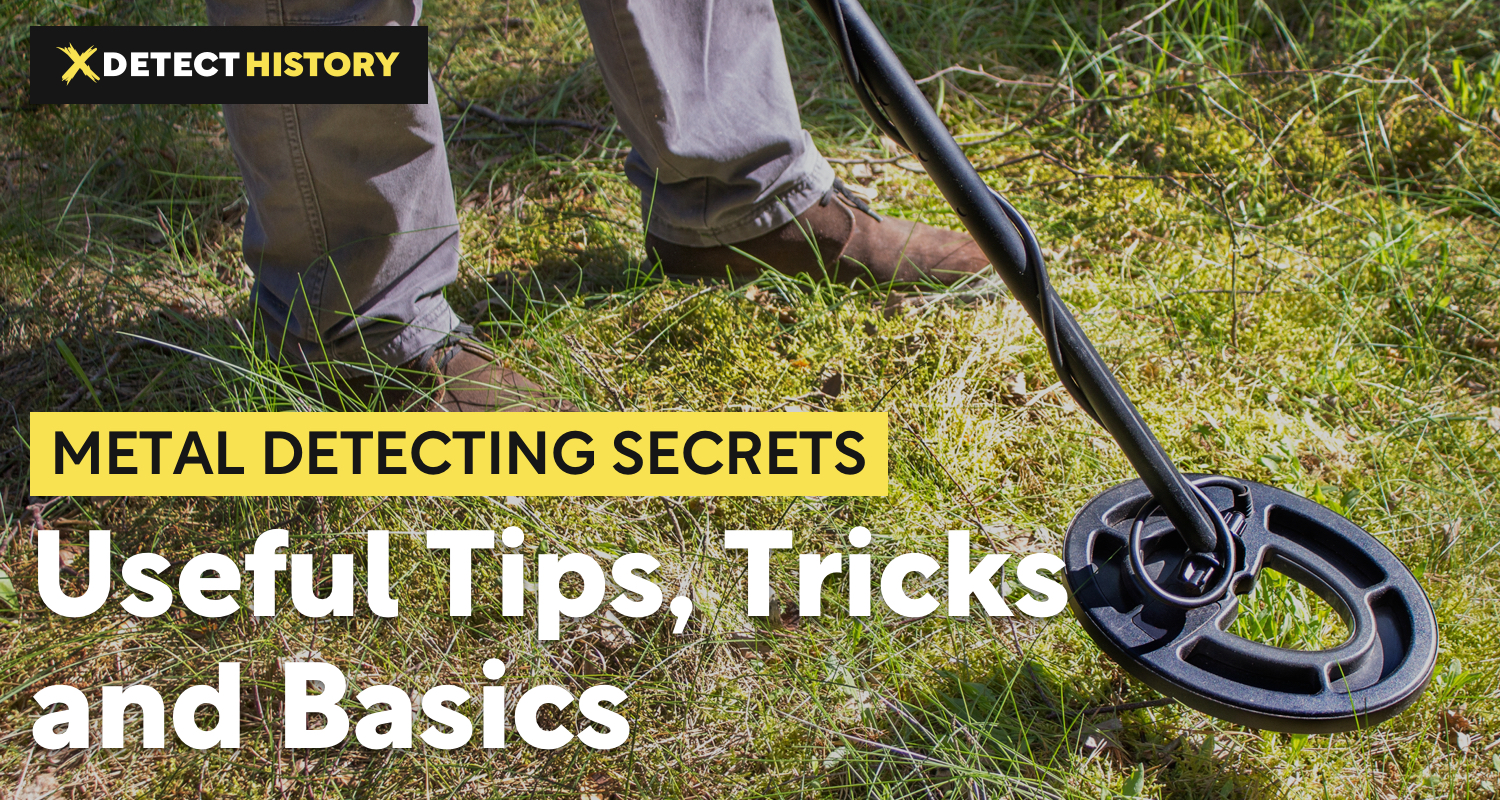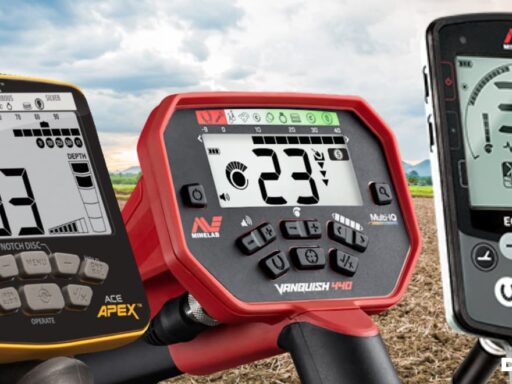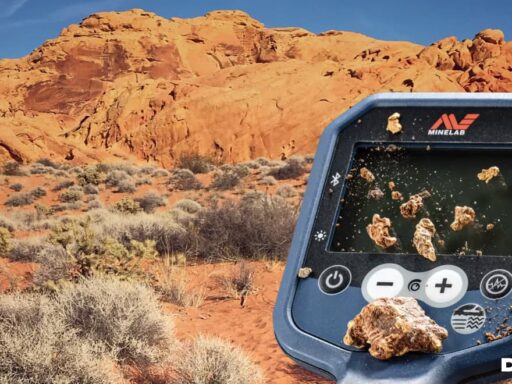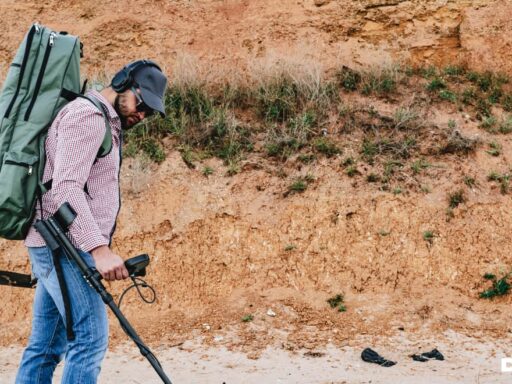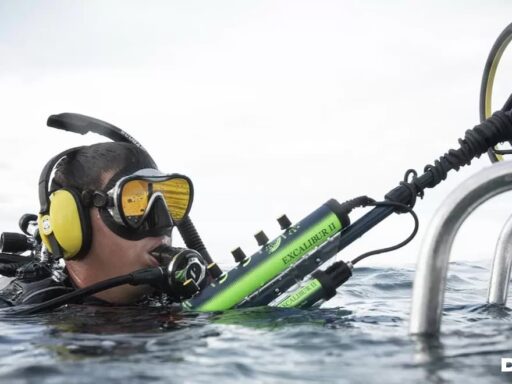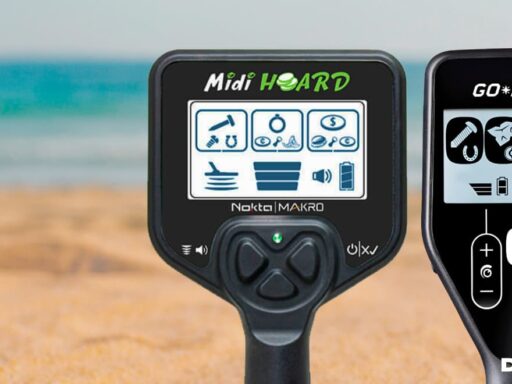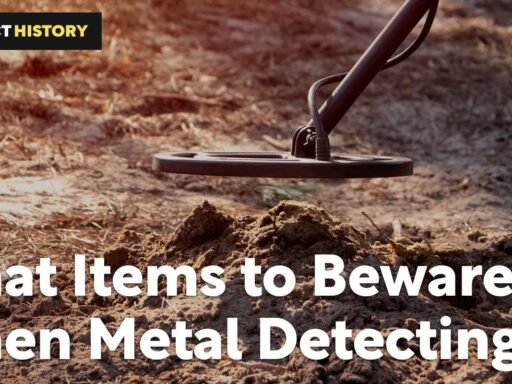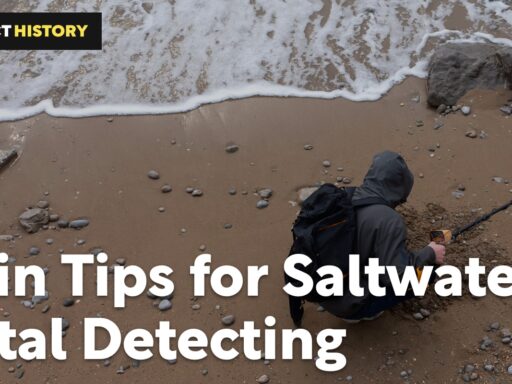Metal detecting as a hobby is cool and exciting, and it is very variable in terms of what you can find, and where you can hunt for treasures. However, most beginner detectorists lack metal detecting basics, and can often benefit from simple metal detecting secrets. Those newbies thinking is metal detecting worth it, or those who are still not sure how to use a metal detector, are generally not aware of the differences between searching for different types of items, or they are not aware of the peculiarities of detecting on dry land and on wet sand, and so on.
This is why Detect History has got your back, and provides a list of the top basic tips for the most popular types of detecting! Check them out below.
3 Most Effective Tips on How To Use a Metal Detector
Modern metal detectors, especially those made specifically for beginners, are pretty autonomous – most of them have Auto Ground Balance, automatic tuning, advanced perfectly set Search modes, and so on. Basically, one just has to switch the machine on, choose the Search mode, and they are good to go. However, all newbies make the same mistakes, so check out three top tips on using the metal detector correctly:
- get used to the machine before you even go to any location other than your backyard. Run a test drive with the machine, bury some metal objects in your garden and listen to signals the machine gives to each of them; try out different modes; search in different weather (if the machine is weatherproof), and so on. Don’t run out into the field having your hands on the device for the very first time.
- learn swinging the search coil properly. Keep the coil close to the ground, but do not press against it. Try not to touch the grass, branches, or stones with the search coil. When you are swinging it, make sure your swings overlap as you go. Do not take the coil up by the end of your swing, keep it on the same distance from the ground surface. Go slowly, do not swing your coil as if it was a broom.
- learn some basic searching and combing techniques. Comb through your location carefully; mark the patches around you to make sure you cover all surfaces. Use various trajectories for search; you can go across the location in different directions three times, until on the fourth time, you spot an awkwardly placed item at an unusual angle.
3 Tips for Beach Metal Detecting
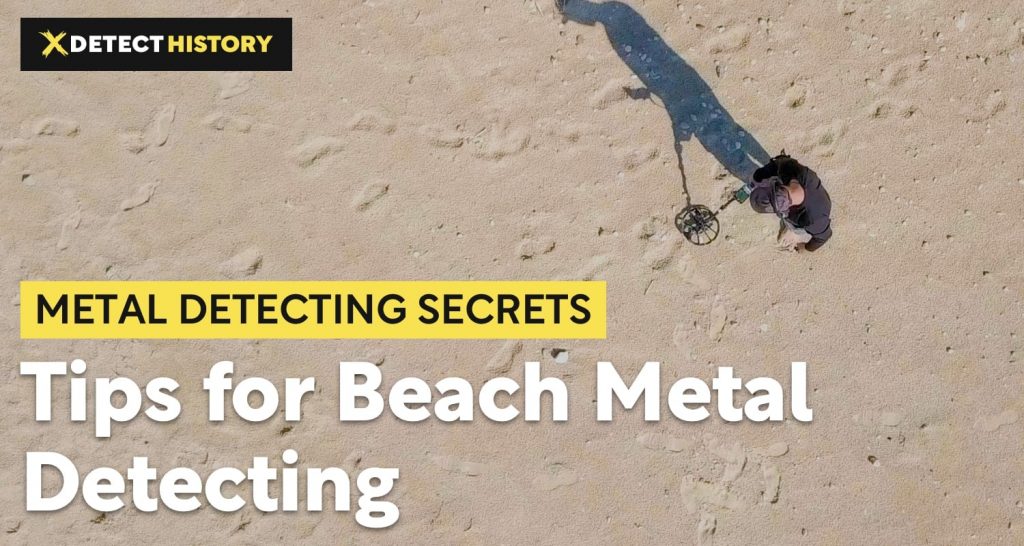
Metal detecting on the beach is very popular, as well as river metal detecting, mostly because, firstly, people tend to visit such places often and lose personal belongings and jewelry which can be valuable. Secondly, you can spot the most curious things in shallow water and in the wet sand. That’s why many beginner treasure seekers are interested in metal detecting beach of saltwater and freshwater bodies. However, wet sand and shallow water detecting is a bit more complicated than on land detecting, so check out three top beach metal detecting tips:
- use headphones instead of speakers to listen to signals. There are two reasons why headphones are preferred. Firstly, the seashore environment is usually windy and noisy, and the noise of the waves running, people talking, children screaming, and seagulls squealing will interfere with your signals, making it close to impossible to listen carefully. The second reason is that beaches are often crowded, and metal detectorists tend to stir curiosity in people (and local management). If you use headphones to make your search quieter, you will attract way less attention and your search will be more productive.
- get yourself a metal detector with high quality discrimination, or even better, with salt water mode. You won’t face this problem in freshwater bodies, but salt waters are full of minerals and metals, and without decent discrimination, your metal detector will give you fake signals every now and then.
- invest into a good pinpointer. For successful treasure hunting, every hunter needs a pinpointer, but on sandy beaches and in shallow water, this tool is especially required. Sand is less stable than dirt, and without a pinpointer, you will have hard times digging small items out. In shallow waters, the story is the same – with sandy floor and poor visibility, finds will slip through your fingers now and again. Pinpointer will help you locate them faster, and avoid losing them.
4 Metal Detecting Tips for Coins Shooting
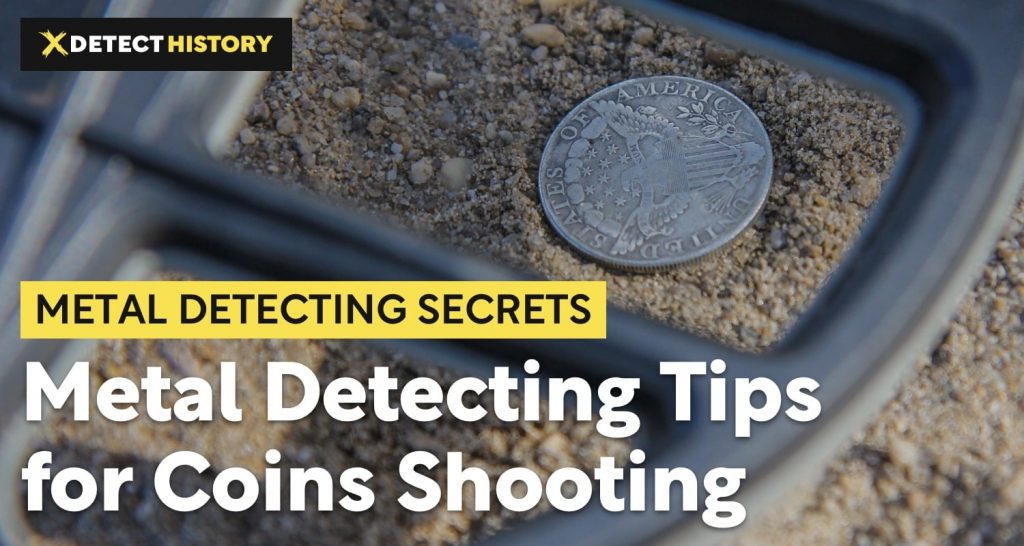
Coins are among the most frequently spotted and the most popular finds in hobby metal detecting. detectorists love coins, because one can start a collection, find a historically valuable coin, or even sell a rare one for good money. Moreover, coins are basically everywhere; this is a universal item that can be found in the dirt, be it ancient or modern coins. However, coins are hard targets, especially if located awkwardly, or on trashy lands. To hunt for coins more effectively, many detectorists will benefit from metal detecting tips for coins:
- when metal detecting coins, comb through the location carefully and thoroughly. Coins are tiny targets, so don’t run randomly around the location. Decide the trajectory to move along, and move according to the grid pattern. If you spot one coin, don’t rush to dig it out, better comb through this patch of dirt more carefully – you can find coil spills.
- choose the right coil for your search. Elliptically shaped coils of smaller size work better for small shallow targets and for trashy areas. Narrow and manoeuvrable search coils will give you more possibilities, especially on uneven surface or surface with vegetation.
- use All Metal mode – coins made in different times have different composition, and may contain all kinds of metals in all kinds of proportions. If you specifically ant coins and expect some to be on the location you chose, try All Metal mode instead of trying to guess what mode will fit most. With All Metal, you will have to dig out more trash, but your chances of finding a rare coin also increase.
- when metal detecting old coins, and finding some, don’t clean them until you verify the nature and value of every particular coin. If possible, handle coins in gloves, because you can destroy the oldest of them simply when touching them with your bare sweaty or dirty hands. Don’t try to wash or let alone scratch coins clean until you are sure this is safe.
2 Tips & Basics on Metal Detecting for Gold
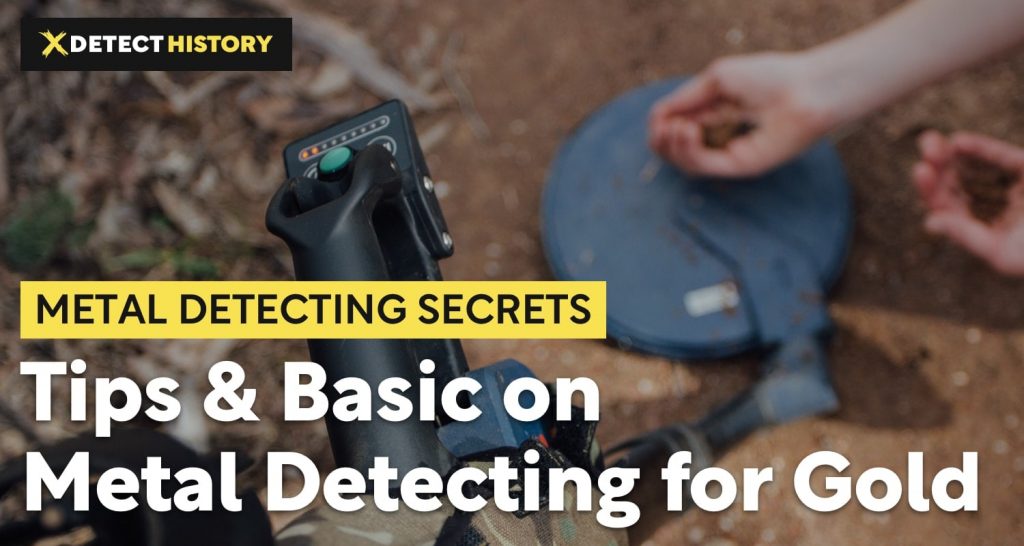
Since the times of the Gold Rush, the very idea of finding gold, especially natural gold ore in the form of dust or nuggets, makes people excited. This is why metal detecting gold is very popular – but at the same time comparatively rare, because metal detecting for gold is one of the hardest and most complicated detecting activities, which requires skill, knowledge, experience, and expensive equipment. Beginners who only make their first steps in gold prospecting may benefit from the following tips:
- get a metal detector specifically for gold. Some beginner-medium level metal detectors may have Gold search modes, but if you want to take a serious approach, get yourself a machine created for gold prospecting. This will be your best investment in this activity.
- look for mineralized grounds when gold prospecting. Experienced prospectors have a long list of signs that the land may be gold-bearing; it is a good idea to research geological conditions under which gold is usually found in different areas.
5 Effective Tips & Tricks for Underwater Metal Detecting
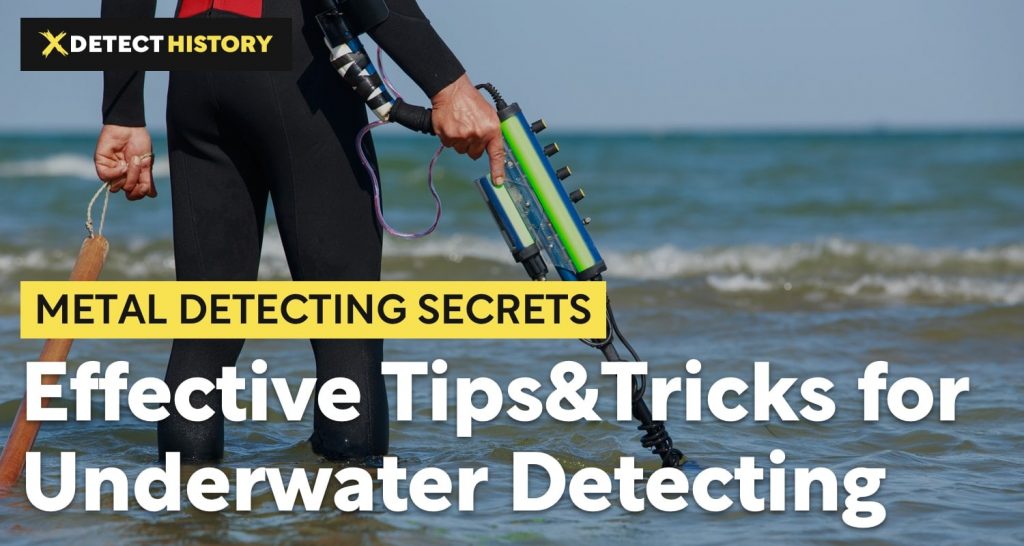
Underwater metal detecting is one of the hardest, and one of the most expensive (in terms of equipment) treasure hunting activities that demand years of experience and skills development. Metal detecting beaches and shipwrecks, different geological locations and so on, is very promising in terms of potential finds. However, this is not a beginner-friendly activity, so please check out some basic tips to start:
- use high quality waterproof headphones, and getting wireless headphones is a good idea. You won’t be able to hear audio signals from your metal detector underwater, but if you take poor quality headphones, you won’t be able to interpret the signals decently, either. So, invest into a good wireless headset.
- choose a metal detector with vibration mode. Underwater, audio signals may be less informative, even in high quality headset, while vibration mode will give you a bit more impression of what to look for, and where.
- when diving in saltwater body, use salt water Search mode, or high level of Discrimination. Salt water is usually highly mineralized, meaning you will get lots of fake signals.
- mind water currents and tides when deep diving for treasure hunting. If you are not aware of local water currents, the situation can get really dangerous pretty quickly. Also, mind the tides and plan your trips beforehand.
- never hunt alone if you do deep underwater treasure hunting. Always have a partner beside you in the boat, or ideally, in water nearby, and make sure you are both able to support underwater communication efficiently.
3 Tips for Relics Hunting and Civil War Metal Detecting
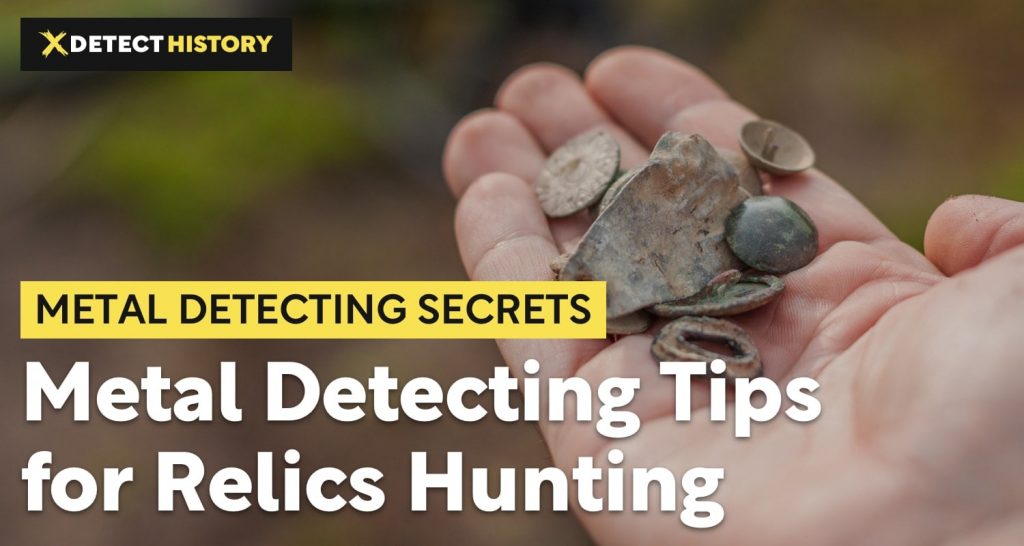
Civil war metal detecting is a popular activity among those enthusiasts passionate about history and American culture. Hunting down not only Civil war items, but generally historical relics and antiquities is not only educating and exciting, but can be profitable, since certain items may be purchased by national museums, or private collectors. However, to make relic hunting and Civil War metal detecting successful, check out the following tips:
- don’t clean the finds until you verify their value. Some finds are very brittle because they were buried in the dirt for long years; certain items can be well-preserved due to their composition and due to favourable chemical composition of the soils; other items can be very fragile. If possible, handle your finds in gloves, and never try to clean them more than it is enough to recognize the item, before you find out the value.
- use a pinpointer and dig carefully. The reason is the same – your relics can be brittle and fragile, and the risk of damaging them when digging is high. Use your pinpointer at all times, and don’t dig holes with a big shovel unless you are sure there are no additional shallow targets above your deeper target.
- use a variety of coils for different types of relics. Research suggested composition of the relics you expect to find, and choose coils according to your items.
7 Useful Tricks for Metal Detecting in the Woods
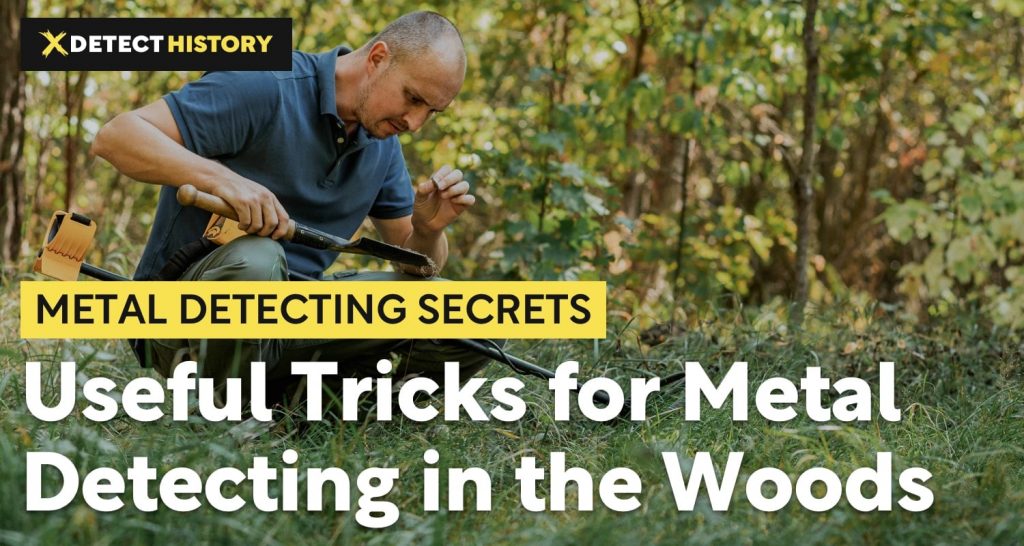
Metal detecting in the woods is one of the most popular activities both for newbies and for seasoned treasure hunters, mostly because woods are usually allowed for detecting by local laws, and also because most people have access to an average wood in their area. However, ironically, searching in the woods is not a breather. Woods can be a complicated location promising a lot, but giving scarce finds. To make your treasure hunting in the woods more effective, check out the tips:
- metal detect after rain. Wet soil conducts electricity better, so whatever targets are hidden underground will respond to the coil’s electromagnetic field better.
- avoid catching grass and branches with the rod. It is easy to damage the rod or the jacks simply by catching them with a branch and jerking.
- search the locations in grid pattern – choose patches of land you want to explore, and comb through them in all directions. Don’t try to cover vast areas at once, better focus on smaller but more promising locations.
- track your position and movement to avoid getting lost, bring a compass along with a cellphone that can get its battery discharged in the woods. If you have a paper map, get it with you, as well. If you travel deeper into the forest along an old path or along a creek, leave marks for yourself as you go.
- look for old trees, old paths, and old foundations. Many events could take place in the woods, but you can’t search around random places hoping to find the right spot. So, look for everything old – old cabins, old foundations, camps, paths, even big old trees. Those are places where people were, and those people could leave something interesting behind.
- get ready to manage the roots when digging. In the forest, roots can be everywhere, so make sure you have enough tools for effective digging. At the same time, don’t damage the roots of the living vegetation left, right, and centre.
- watch out for wildlife and mind your surroundings. Both wildlife or weird strangers in the middle of nowhere can be dangerous.
